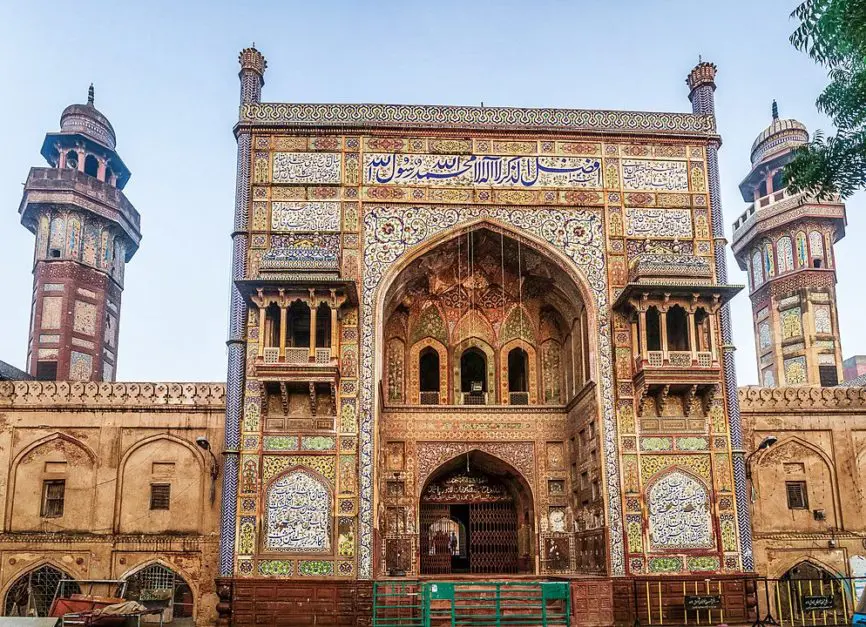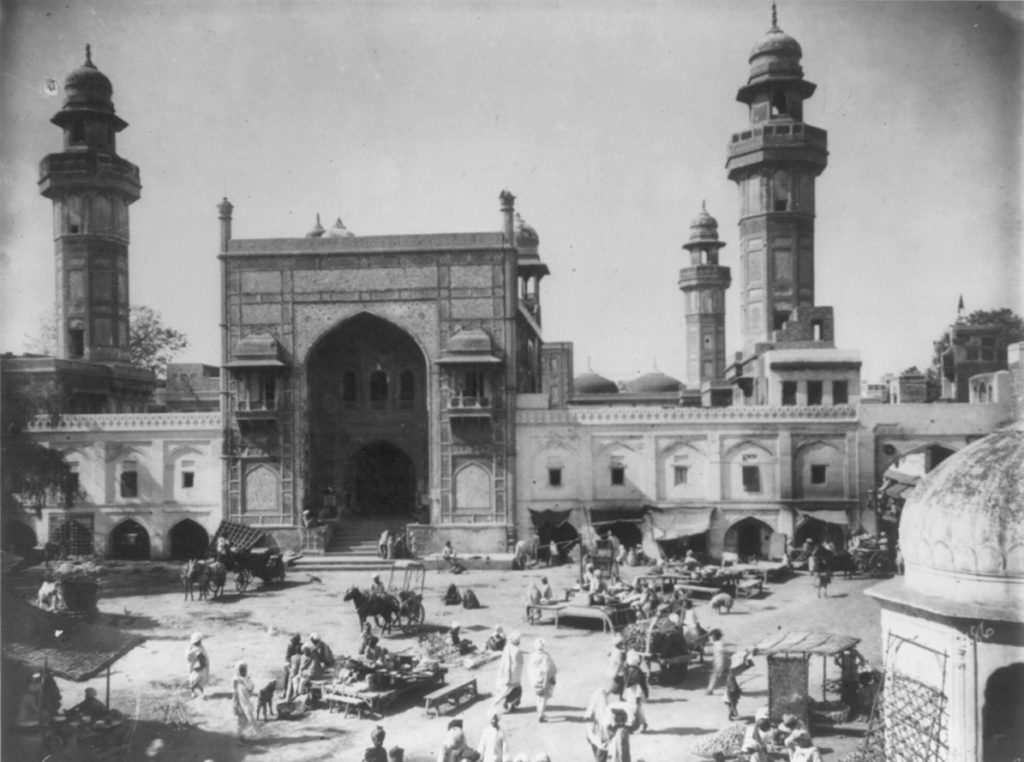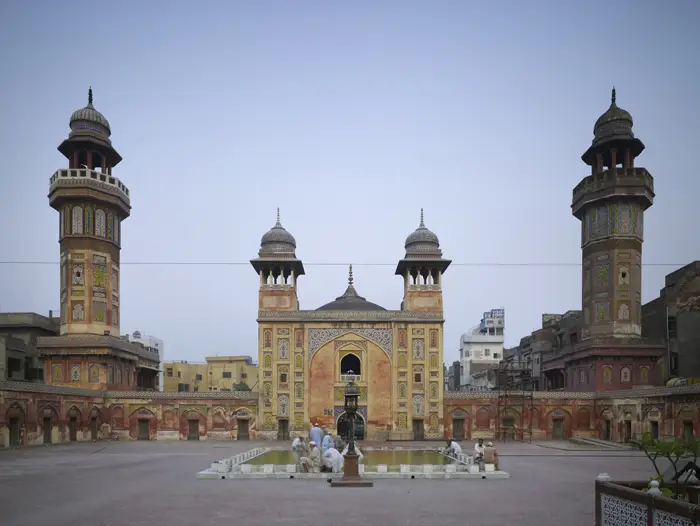Subtotal: $4398.00
Located in the heart of Lahore, Pakistan, the Wazir Khan Mosque is a stunning example of Mughal architecture that has been captivating the hearts and minds of visitors for centuries. This magnificent mosque was built during the reign of the Mughal Empire, under the auspices of Alauddin Mongol, for Nawab Beviladi Khan Wazir, the Muslim Prime Minister of the time. With its intricate marble designs, intricate tile work, and stunning architecture, the Wazir Khan Mosque is a true masterpiece that has stood the test of time.
Table Of Content
History of the Wazir Khan Mosque
The Wazir Khan Mosque was built in 1634-1635 AD, during the reign of the Mughal Emperor Shah Jahan. It was a time of great cultural and artistic flourishing in the Mughal Empire, and the mosque was a testament to the imperial court's commitment to promoting Islam and discouraging idolatry. The mosque was built on a plot of land that was previously occupied by a temple, which was razed to the ground by the Mughal authorities.
The mosque was constructed by the renowned architect Fidai Khan, who was a disciple of the famous architect Ustad Ahmad Lahori. The mosque's design was inspired by the architectural styles of the Ottoman Empire, which was a major cultural influence in India during the Mughal period. The mosque's exterior is made of yellow stone, while its interior is adorned with intricate marble and tile work.
layout
The layout of Wazir Khan Mosque is a typical example of Mughal architecture, emphasizing symmetry and grandeur. The mosque is rectangular in shape and is built on a raised platform. The main components of its layout include the entrance, courtyard, and the prayer hall.
Entrance
The entrance to the Wazir Khan Mosque is through a majestic gateway that opens into the vibrant Wazir Khan Chowk. The gateway is adorned with intricate frescoes and tile work, setting the tone for the exquisite artistry found throughout the mosque. The entrance is framed by two imposing minarets, each standing at about 100 feet tall.
 |
|
Courtyard
Upon entering, visitors are greeted by a large rectangular courtyard measuring approximately 160 feet by 130 feet. The courtyard is paved with brick tiles arranged in geometric patterns and includes a central ablution pool, known as the hauz. The courtyard is surrounded by arcades on all four sides, with shops known as Hujras incorporated into the structure, reflecting the mosque's historic role as a community center.
Prayer Hall
The prayer hall is situated on the western side of the courtyard and is the focal point of the mosque. It features a large central iwan flanked by two smaller iwans. The hall is topped with five domes, with the central dome being the largest. The interior of the prayer hall is richly decorated with frescoes depicting floral patterns, Islamic calligraphy, and intricate geometric designs.
Architecture of the Wazir Khan Mosque
The Wazir Khan Mosque is a square-shaped building with an arched entrance and four towers. The mosque's facade is decorated with intricate marble work, including intricate floral patterns and Arabic inscriptions. The main prayerThe Architectural Marvel: Wazir Khan Mosque, Lahore
In the heart of Lahore, Pakistan, lies the majestic Wazir Khan Mosque, a testament to the architectural grandeur of the Mughal Empire. The mosque, built in 1634 AD during the reign of Aurangzeb, is a magnificent example of Mughal architecture, blending Ottoman and Turkish Islamic styles. This article will delve into the history, architecture, and significance of the Wazir Khan Mosque, and explore its enduring beauty and cultural importance.
History and Background

The Wazir Khan Mosque was commissioned by Nawab Beviladi Khan Wazir, the Prime Minister of Lahore during the reign of Aurangzeb, in 1634 AD. The mosque was built as a grand mosque in the city, and its construction was a massive undertaking that required the labor of thousands of skilled artisans and craftsmen. The mosque was named after its patron, Nawab Wazir, a devout Muslim and a prominent figure in the Mughal court.
Architecture and Design
The Wazir Khan Mosque is an architectural masterpiece, with its intricate marble work, ornate arches, and delicate carvings. The mosque is built on a square plan, with a central courtyard surrounded by four porticos. The walls of the mosque are constructed of red sandstone, with marble used extensively for the arches, columns, and other ornamental features.
 |
|
The mosque's facade is a breathtaking sight, with its intricate marble carvings and ornate arches. The main entrance is flanked by two towers, each topped with a finial, while the central arch is adorned with intricate marble work and carvings. The interior of the mosque features a beautiful courtyard, surrounded by four porticos with marble columns, and a large carpet praying area.
Significance and Importance
The Wazir Khan Mosque is an important pilgrimage site for Sunni Muslims, and it is considered one of the oldest and most historic mosques in Lahore. The mosque has been the site of many important historical events, including the death of Emperor Aurangzeb, who passed away in 1707 AD and was buried in the mosque.
The Wazir Khan Mosque is also significant because of its cultural and architectural importance. The mosque's intricate marble work and carvings are a testament to the skill and craftsmanship of Mughal artisans, and its blend of Ottoman and Turkish Islamic styles reflects the cultural exchange and influence of the Mughal Empire.
Conservation and Restoration
In recent years, the Wazir Khan Mosque has undergone extensive conservation and restoration work to preserve its architectural integrity and cultural significance. The mosque has been designated as a protected national monument, and the restoration work has been carried out by the Lahore Museum with the support of the government and international organizations.
You May Also Like Bdshahi Mosque Lahore
Conclusion
The Wazir Khan Mosque is a cultural and architectural gem, a testament to the grandeur of the Mughal Empire and the skill of its artisans. This ancient mosque has witnessed many historical events and has been the site of many important pilgrimages and celebrations. Its blend of Ottoman and Turkish Islamic styles reflects the cultural diversity and richness of the Mughal Empire, and its intricate marble work and carvings are a testament to the skill and craftsmanship of Mughal artisans.
The Wazir Khan Mosque, also known as the Mosque of Nawab Mulk Raja or the Mosque of Wazir Khan, is a historic mosque that is part of the importance of Lahore. It was built during the reign of the Mughal Empire, under the reign of Alauddin Mongol, for Nawab Beviladi Khan Wazir, who was the Muslim Prime Minister of the time.
As an exceptionally rich and affluent city during the Mughal period, Lahore was an important spot for Muslim scholars and leading figures of the time. A lot of madrasas or Islamic seminaries were built and specific tracts of land or structures were designated for dominating purposes. The area where the mosque currently stands was a necessary and the noblest piece of land in the city and hence it got portion of land in the form of square which served as a place of gathering for those who come to visit Khan Wazir. The grandiose mosque before him has 743 pillars, including 120 marble ones, standing magnificently in the middle of the marble of the mosque.
The Mosque's architecture is a careful blend of the Ottoman and Turkish Islamic styles. Inside, there are detailed marble designs around the courtyards where big carpets are couched.
The massive mosque, enlisted as an important holy place of Sunni Muslims, is still hosted in prayers and annual celebrations held in its honor. Every year, a cricket match is arranged to take place on its roof as is the site for religious gatherings and festivities on joyous occasions. Notwithstanding the ageless holy site of Muslims, Wazir Khan Mosque is listed as one of the oldest mosques in Lahore from its topography and location inside which thrives the spirit of the 14th century's shrinking Saint Mosque.








Leave a Comment
Your email address will not be published. Required fields are marked *